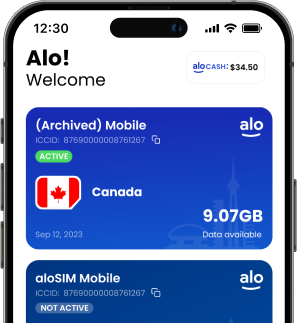Today, we live in an era of economic uncertainty. Yet, despite rising expenses, a fascinating anomaly is unfolding right in front of our eyes: travel isn’t just surviving—it’s thriving, more now than ever before.
Today’s travellers are prioritizing experiences over possessions, but they’re bringing higher expectations along with their luggage. This surge in demand is pushing the industry to innovate faster than ever before.
A new travel paradigm is here
Today’s travelers aren’t simply seeking more frequent trips—they’re looking for ways to travel better. This change in the mindset of travellers is driving every sector of the industry, from airlines to booking platforms, to elevate their game.
The good news? Technology is making this heightened level of service increasingly achievable for organizations of all sizes.
4 major trends reshaping travel industry advertising
A recent survey conducted by the DeptAgency contained some eye-opening insights into travel industry advertising. Here is a closer look at some of them.
Changes in mindset for Gen Z and Millennial travellers
Gen Z and millennial travellers are among the growing demographic of travellers taking over the travel industry. However, they bring an entirely different perspective than their counterparts. Here’s what the numbers have to say:
- 72% of Gen Z has prioritized travel in their 2024 budget
- 64% of global travellers are finding ways to cut expenses to preserve their travel spending
- 85% of Millennials and Gen Z are willing to invest in unique experiences during their trips, often times with cost playing a minimal factor in their decision-making process
These younger travelers are rewriting the rulebook of the industry, with trends like “gig-tripping” and “bleisure” travel. They’re seeking unique, personalized experiences that don’t fit the mold of regular travel patterns.
For brands looking to target these markets, TikTok has become not only a powerful tool, but a non-negotiable marketing asset. However, success on the platform requires more than meets the eye:
- Keeping up to date with emerging travel trends, like accessible luxury and sustainable travel
- Partnering with authentic creators who deliver personable content
- Creating genuine, save-worthy content that appeals to viewers
- Nurturing community engagement by remaining active on the platform
To reach digital-native travelers effectively, brands are redoing their programmatic advertising strategies through Demand-Side Platforms. The modern approach of DSP advertising involves:
- Cross-device targeting: you reach the travelers across multiple touchpoints.
- Dynamic creative optimization: automatic updates of content based on user behavior and preference.
- Advanced audience segmentation: interest-based targeting is believed to be more effective than simple demographics.
- Real-time bidding strategies: they are optimized for different stages of the travel planning journey.
- Integration with first-party data: more personalized advertising experiences are ensured.
Travel brands in particular have seen great success through programmatic video ads and rich media formats, which allow them to showcase destinations and experiences in an authentic, non-promotional manner. This method of advertising speaks to what the younger generation of travelers are seeking: authentic, experience-focused content.
The mixed reality revolution
The limitations of 2D screens are becoming increasingly apparent as travellers seek more immersive experiences:
- 71% of travellers have stated that digital experience quality is a key booking factor
- 60% of travellers would book after a virtual experience
- Virtual reality is projected to generate a whopping $1.5 trillion in additional tourism revenue by 2030
With up and coming technologies like Apple Vision Pro, spatial design is becoming increasingly important for travel brands. Virtual tours, interactive local stories, and immersive cultural experiences are no longer luxuries—they’re becoming expectations.
A new standard in the hospitality industry: AI
Artificial Intelligence is evolving from being a buzzword into a multi-use tool essential for travel. For example:
- 32% of all revenue generated by the travel industry will be influenced by AI in 2024
- 75% of global travelers expect to use AI for accommodation planning by 2033
- 62% of millennials are interested in the prospect of AI travel companions for tips and insights
The potential of AI reaches far beyond chatbots, offering:
- Multi-platform destination research
- Personalized communication systems
- Custom itinerary curation
- Real-time travel concierge services
- Cultural experience matching
- Smart booking systems
The technology is particularly effective at using historical data to predict and prevent potential issues from arising.
Mindset-based marketing becomes the new norm
The online travel market is expected to double in the next 5 years, and having a well-designed website is more important than ever:
- 38% of users will abandon a website if they find it unattractive
- 75% judge the credibility of a company purely based on its’ website design
- 94% of first impressions are design-related
Industry-leading brands are moving beyond demographic-based targeting to focus on traveler mindsets and archetypes. This shift requires:
- Hyper-segmentation beyond just traditional demographics
- Multi-method customer research
- Experimentation and ongoing optimization
- A deep understanding of customer mindsets and motivations
This is huge, a major evolution beyond traditional demographic-based marketing. Rather than focusing purely on things like age groups or income classes, it digs deeper into the mindsets that are leading this travel or leisure behaviour.
What does the future hold for the travel industry?
The travel industry is at a crossroads, where high demand meets unprecedented technological capability. Success in 2025 and beyond will fall into the hands of brands that can get a firm handle on these emerging trends, while still being able to maintain authenticity and deliver real value to their audience.
The mandate is clear for travel brands: embrace these changes while staying true to the overall purpose of travel—creating meaningful experiences and connections.
The tools and technologies are readily available. The key to implementation however, lies in a strategic, thoughtful approach.

